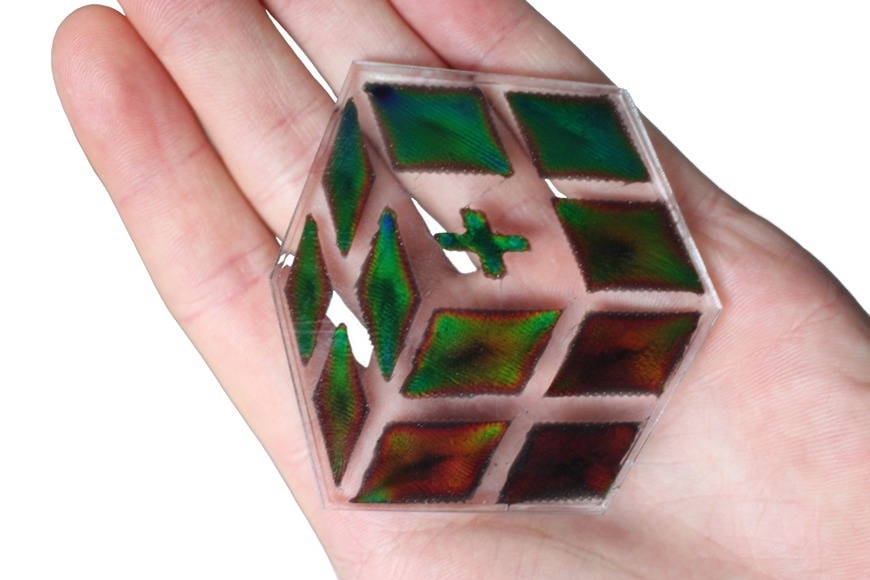Can biodegradable sensors and displays be 3D printed? Empa’s Cellulose & Wood Materials laboratory has created a cellulose-based material that enables this. When heated or stretched, a mixture of hydroxpropyl cellulose, water, carbon nanotubes, and cellulose nanofibrils changes color—without the addition of any pigments.

Colorful cellulose: The Empa logo 3D-printed from the new HPC mixture changes color when it gets warmer. Image Credit: Empa
An elastic material that can be 3D printed, changes color, conducts electricity, and is biodegradable? That is not just wishful thinking on the part of Empa scientists from the Cellulose & Wood Materials laboratory in Dübendorf - they have created a material with these exact properties using cellulose and carbon nanotubes.
The scientists began with hydroxypropyl cellulose (HPC), a popular excipient used in pharmaceuticals, cosmetics, and foodstuffs, among other things. HPC is known to form liquid crystals when combined with water.
These crystals have an amazing property: depending on their structure, which is determined by the concentration of HPC, among other things, they shimmer in different colors, despite the fact that they contain no color or pigment.
This phenomenon is known as structural coloring, and it occurs in nature. The brilliant coloration of peacock feathers, butterfly wings, and chameleon skin is obtained not from pigments but from microscopic structures that “split” (white) daylight into spectral colors and reflect only the wavelengths for specific colors.
The structural coloring of HPC varies with temperature as well as concentration. The investigators, guided by Gustav Nyström, added 0.1 weight percent carbon nanotubes to the mixture of HPC and water to better exploit this property.
This causes the liquid to become electrically conductive, allowing the temperature and, thus, the color of the liquid crystals to be controlled by applying a voltage. As an added bonus, the carbon acts as a broadband absorber, deepening the colors. Nyström’s team was also able to make it 3D printable by incorporating a small amount of cellulose nanofibers into the mixture without affecting structural coloring or electrical conductivity.
The investigators 3D printed numerous potential applications of the new technology using the novel cellulose mixture. A strain sensor that changes color in response to mechanical deformation and a simple seven-segment display were among them.
Our lab has already developed different disposable electronic components based on cellulose, such as batteries and sensors. This is the first time we were able to develop a cellulose-based display.
Xavier Aeby, Study Co-Author, Empa
In the future, cellulose-based ink may find use in a variety of applications, including temperature and strain sensors, food quality control, and biomedical diagnostics.
Sustainable materials that can be 3D printed are of great interest, especially for applications in biodegradable electronics and the Internet of Things. There are still many open questions about how structural coloring is generated and how it changes with different additives and environmental conditions.
Gustav Nyström, Empa
Nyström and his colleagues hope to continue this line of research to explore many more interesting phenomena and potential applications.
The chameleon effect: Iridescent 3D ink from cellulose
Video Credit: Empa